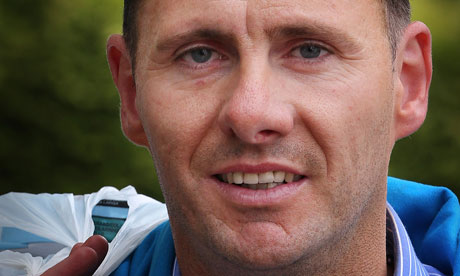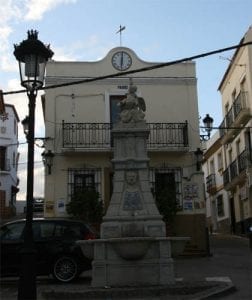Spaniards Ivan Valea and Julia Fernandez have been accused of smuggling an alleged 300kg of cocaine.
Spaniards Ivan Valea and Julia Fernandez have been accused of smuggling an alleged 300kg of cocaine.
ACCUSED drug smugglers Ivan Valea and Julia Fernandez were the life of a pirate party at Bundaberg marina only a few nights before they were arrested in one of Australia's biggest cocaine busts.
Fellow yachties say the fun-loving Spanish couple gave no hint that they were allegedly part of an international crime syndicate, with Gold Coast links, during their three-week stay at the marina on board their boat Friday Freedom.
Carousing with other boaties who had sailed alongside them from Port Vila to Bundaberg in the annual Port2Port Yacht Rally, Valea, 35, and Fernandez, 37, were hardly keeping a low profile for two people with an alleged cargo of 300kg of cocaine worth up to $120 million hidden in their hull.Hamming it up for the camera, Valea even won the award for best costume at the rally's pirate party last week.
"They were very, very nice people," Bundaberg Yacht Club president Lesley Grimminck told The Courier-Mail yesterday. "They came to just about all our functions and we never suspected a thing. Everyone was just blown away when we found out."
Ms Grimminck said Friday Freedom was one of 85 boats in the rally fleet which arrived in Bundaberg on October 20.
She said Ms Fernandez spoke no English and Mr Valea interpreted for her at functions held at Bundaberg marina.
"We didn't have a clue they were up to no good," Ms Grimminck said. "The first I knew about it was on Saturday morning when all hell broke loose at the marina. There were police and Customs officers everywhere and they turned the boat upside down."
The couple, along with alleged cocaine syndicate kingpin Jose Herrero-Calvo, 38, of Sydney, and Miguel Angel Sanchez Barrocal, 39, of the Gold Coast, were arrested in Bundaberg at the weekend over what Australian Federal Police said was the fifth biggest drugs bust in the nation's history.
The AFP said cocaine with a wholesale value of $78 million was seized in raids that also netted $3.5 million in cash, including almost $300,000 at a Surfers Paradise residence.
Ms Fernandez was in tears when the four Spanish nationals briefly faced Bundaberg Magistrates Court yesterday. All were remanded in custody until their next court appearance in January.
The Friday Freedom, a 17m steel ketch, had been under surveillance since September as part of a 10-month investigation. Codenamed Operation Avalon, the probe began as a money-laundering investigation in February after the AFP received intelligence on large amounts of cash being sent overseas.
Queensland police and Customs officials joined federal agents in the investigation and tracked the Friday Freedom after it left Port Vila for Bundaberg.
Authorities swooped on Bundaberg marina after Mr Herrero-Calvo and Mr Barrocal allegedly drove from the Gold Coast to Bundaberg last Friday and removed 100kg of cocaine from the vessel in two suitcases. They were arrested on Friday night after allegedly driving off in two hire cars with their huge stash.
Assistant Commissioner Kevin Zuccato, the AFP's national manager of serious and organised crime, said syndicate members had been "very patient", waiting three weeks to begin moving the cocaine after the Friday Freedom docked in Bundaberg.
Mr Valea and Ms Fernandez were arrested on Friday Freedom and the remaining drugs, believed to have originated from South America, were located in the boat's bilge, wrapped in black plastic and tape to keep them dry.
The four Spaniards face life imprisonment if convicted.












































0 comments:
Post a Comment